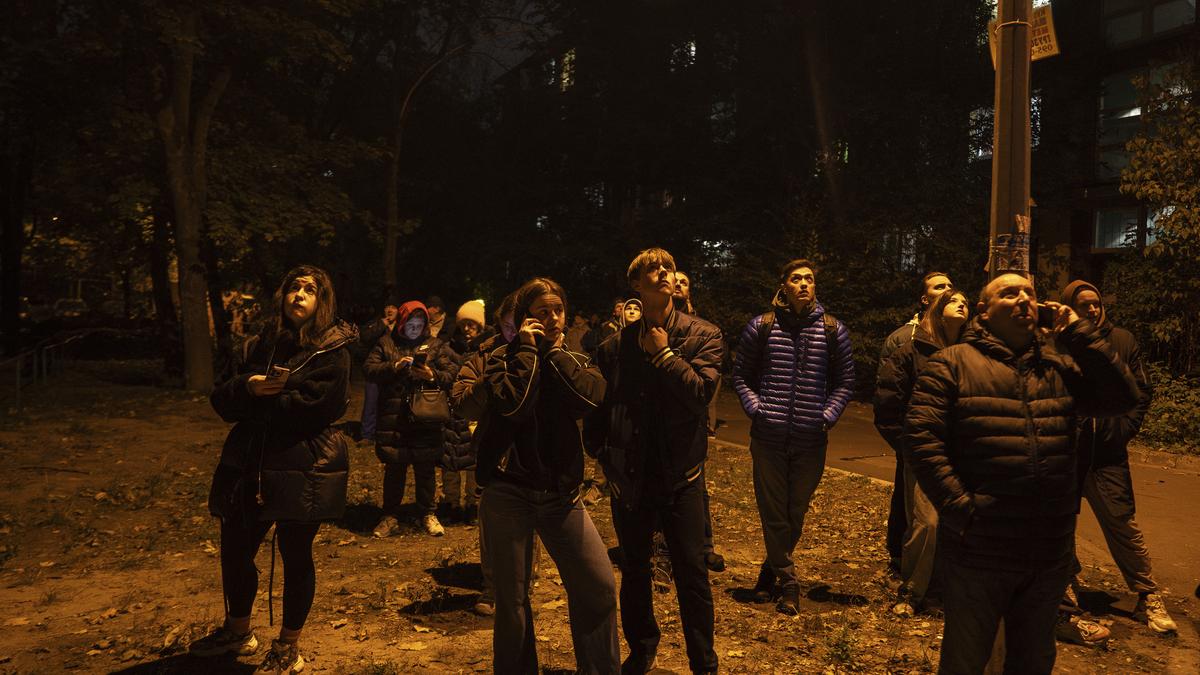At a secretive factory in Russia’s central grasslands, engineers are manufacturing hundreds of decoy drones meant to overwhelm Ukrainian defenses as they try to protect against a horrific new weapon, an Associated Press investigation has found.
The plant at Russia’s Alabuga Special Economic Zone recently started churning out thermobaric drones alongside the decoys, the investigation found. The thermobaric warheads create a vortex of high pressure and heat that can penetrate thick walls. They suck out all the oxygen in their path, and have a fearsome reputation because of the injuries inflicted even outside the initial blast site: Collapsed lungs, crushed eyeballs, brain damage.
Decoy drones in Ukraine
Russia came up with the plan for decoys in late 2022 and codenamed it Operation False Target, according to a person familiar with Russia’s drone production who spoke on condition of anonymity because the industry is highly sensitive. The idea was to launch armed drones along with dozens of decoys, sometimes stuffed with rags or foam, and indistinguishable on radar from those carrying real bombs. Ukrainian forces must make split-second decisions about how to expend scarce resources to save lives and preserve critical infrastructure.
“The idea was to make a drone which would create a feeling of complete uncertainty for the enemy. So he doesn’t know whether it’s really a deadly weapon … or essentially a foam toy,” the person said. With the thermobarics, there is now a “huge risk” an armed drone could deviate from its course and end up in a residential area where the “damage will be simply terrifying,” he said.

In recent weeks, decoys have filled Ukraine’s skies by the dozens, each one appearing as an indistinguishable blip on military radar screens. During the first weekend of November, the Kyiv region spent 20 hours under air alert, and the sound of buzzing drones mingled with the boom of air defenses and rifle shots.
Unarmed decoys now make up more than half the drones targeting Ukraine, according to the person and Serhii Beskrestnov, a Ukrainian electronics expert whose black military van is kitted out with electronic jammers to down drones.
Both the unarmed decoys and the armed Iranian-designed Shahed drones are being built at a factory in Russia’s Alabuga Special Economic Zone, an industrial complex set up in 2006 about 1,000 kilometers (600 miles) east of Moscow to attract businesses and investment to Tatarstan. It expanded after the 2022 invasion of Ukraine and some sectors switched to military production, adding new buildings and renovating existing sites, according to satellite images analyzed by The Associated Press.
Russia and Iran signed a $1.7 billion deal for the Shaheds in 2022, after President Vladimir Putin invaded Ukraine, and Moscow began using Iranian imports of the unmanned aerial vehicles, or UAVs, in battle later that year. Soon after the deal was signed, production started in Alabuga.
In October, Moscow attacked with at least 1,889 drones – 80% more than in August, according to an AP analysis tracking the drones for months. On Saturday, Russia launched 145 drones across Ukraine, just days after the re-election of Donald Trump threw into doubt U.S. support for the country.

Russian drone tactics continue to evolve. Now, more powerful missiles often follow close behind as air defenses are exhausted by the drones. The most destructive are the ballistic and cruise missiles that fly many times faster than the drones, which buzz loudly and can be tracked by the naked eye.
Even the decoys can be useful to Russia. One decoy with a live-feed camera allows the aircraft to geolocate Ukraine’s air defenses and relay the information to Russia in the final moments of its mechanical life.
Night after night, Ukrainian sharpshooters spring into action to down the drones with portable surface-to-air missiles.
Published – November 16, 2024 11:59 am IST



